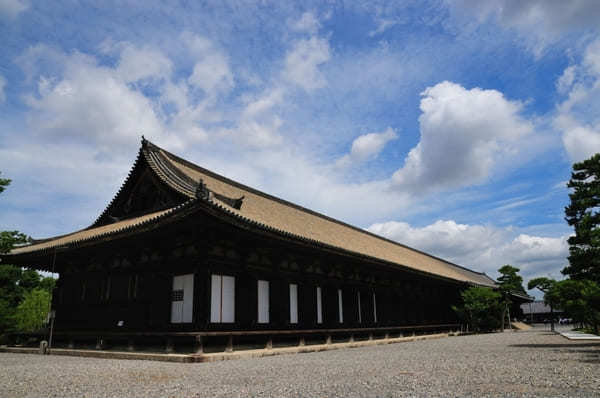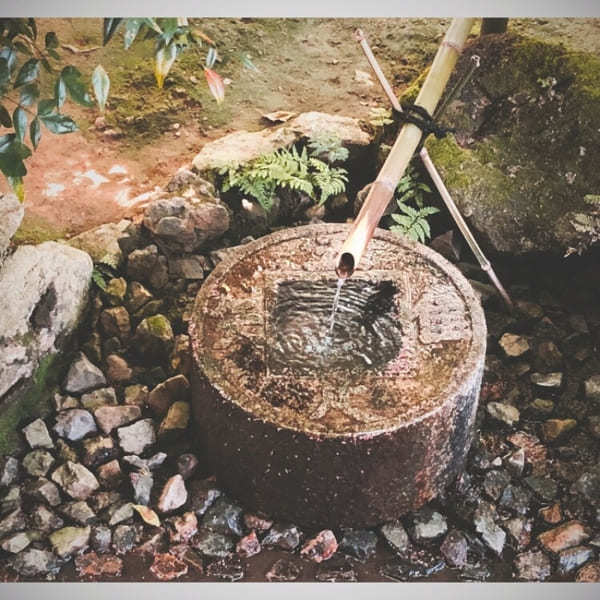10.Sanjusangendo (Higashiyama/Gion)

The main hall of Rengeoin Temple was built in 1164 by Taira no Kiyomori at the order of Emperor Go-Shirakawa. It is called "Sanjusangendo" because of the 33 pillared rooms in the inner sanctum of the main hall, which runs 120 meters from north to south, and is also known as the longest wooden building in Japan.
The hall is lined with 1,000 life-size standing statues of Senju Kannon, each with a different expression, including the seated image of Senju Kannon, a national treasure.
11. Ryoanji Temple (Arashiyama, Sagano, Taimata, Katsura)

Ryoanji Temple is a temple of the Rinzai sect of Buddhism, founded by Hosokawa Katsumoto, a feudal lord who played an active role in the Muromachi Shogunate. The famous stone garden is a simple, masterpiece garden with a rectangle of 25 m wide and 10 m deep surrounded on three sides by white sand and 15 stones.
The 15 stones are arranged in 5, 2, 3, 2, 3, and so on. It is said that no matter which angle you view the garden from, one stone is always hidden behind the others, making it impossible to see all 15 stones at once.

In the fall, the autumn leaves over the stone garden are beautiful, and the foliage tunnel on the stone steps of the Korori is also a must-see.
12.Nishiki Market (Nijo, Karasuma, Kawaramachi)

Nishiki Market is a shopping street located on Nishiki-koji-dori, one street north of Shijo-dori, in the center of Kyoto. It is about 390 meters long from east to west, and about 130 stores are crammed into its narrow 3.2 to 5 meter wide lanes. Gourmet food such as soy milk doughnuts, Kyoto-style eateries, and stores selling pickles, Tanba black soybeans, and other foods that make great souvenirs make this a must-visit spot during your visit to Kyoto.

Efforts have been made to refrain from walking around eating here since 2019, and visitors are encouraged to stop and eat at storefronts.
13. Nanzenji Temple (Shimogamo, Kitashirakawa, Heian Shrine)

Founded in 1264 by Emperor Kameyama, this temple is the head temple of the Nanzenji school of the Rinzai sect of Zen Buddhism." The magnificent Sanmon Gate, one of the "Three Great Gates of Kyoto" and one of the "Three Great Gates of Japan," allows visitors to go up to the second floor Gohorou, where they can view the temple grounds and the city of Kyoto from a height of 22 meters.

The 93.2-meter-long Suijikaku, built in 1890, is famous for being used as a filming location for many TV dramas and movies. It is also known for its beautiful autumn foliage, which is usually at its best from mid to late November.
14.Toji Temple (Kyoto Station area)

The official name of this temple is Kyo-o-gokoku-ji Temple. The five-story pagoda, the symbol of Kyoto, is 55 meters high and the tallest wooden structure in Japan. It was rebuilt by Tokugawa Iemitsu and is designated as a national treasure. Kondo, Daishido, and Renkamon, rebuilt by Toyotomi Hideyori in 1603, are also designated as national treasures.

During the cherry blossom season, To-ji Temple holds a special nighttime viewing called "To-ji Temple Night Cherry Blossom Lighting," where visitors can enjoy the elegant view of the five-story pagoda, Fuji-zakura and weeping cherry trees illuminated by the light.
15.Kyoto Tower (Kyoto Station area)

Kyoto Tower stands 131 meters above the ground, right in front of the Karasuma Central Exit of Kyoto Station. The observation deck is located on the 4th and 5th floors of the tower and is open from 9:00 am to 9:00 pm.
Although the observation deck itself is not very high at 100 m above the ground, it offers an unobstructed view of the city of Kyoto, as there are not many tall buildings in the city.
There is also a large public bath on the third basement floor of Kyoto Tower, so if time permits, a refreshing bath is also recommended!
16.Heian Jingu Shrine (Shimogamo, Kita Shirakawa, Heian Jingu Shrine)

Heian Jingu was built in 1895 as a general shrine for the citizens of Kyoto on the occasion of the 1,100th anniversary of the relocation of the capital to Heian-kyo. The shrine pavilions, which are five-eighths the size of the main hall (Chodoin) of Heian-kyo, are beautifully reproduced, and the "Jinguen," a vast 30,000 m2 garden with a circular path around a pond, is filled with weeping cherry trees and other seasonal flowers and plants.
17. Jishu Shrine (Higashiyama/Gion)

Located next to Kiyomizu-dera Temple, a World Heritage site and one of Kyoto's most popular tourist attractions. Jishu Shrine is one of Kyoto's representative match-making shrines, with Okuninushi no Mikoto, the famous god of marriage, as its main deity.

There are two stones called "love fortune-telling stones" on the shrine grounds, and legend has it that if you can walk between the two stones with your eyes closed and reach the stone on the other side, your love will come true.
Translated with www.DeepL.com/Translator (free version)
提供・トリップノート
【こちらの記事も読まれています】
>【豊洲】「チームラボ プラネッツ」徹底ガイド!お台場との違いは?
>東京のブルックリン!蔵前で行きたい散策スポット・お店16選
>【静岡】本当は広めたくない!柿田川湧水公園の神聖な見どころ5選
>京都・嵐山の人気観光スポットTOP15!旅行好きが行っている観光地ランキング
>【滋賀】SNS映えしそう!長浜のおすすめ観光スポット・お店10選













































